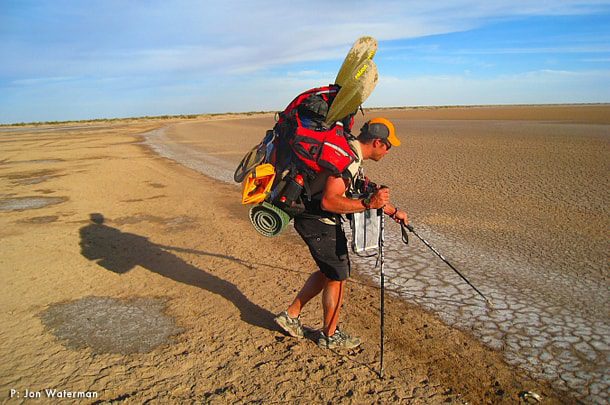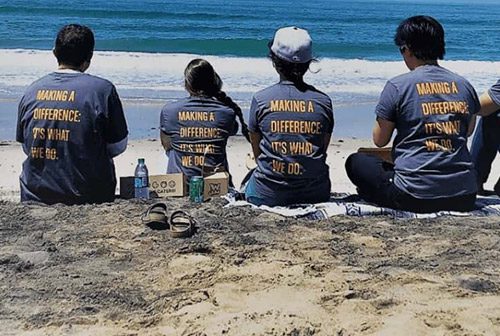With the worst drought in recorded history parching the state, water and water sourcing options are hot topics. In this two part series (read part two), we chat with our Waterkeeper Matt O’Malley, who discusses the Colorado River, future water prospects and more.
Part 1 of 2
Why is water considered the lifeblood of the Southwestern US?


Without water our communities would not exist as they do. San Diego, Los Angeles, Phoenix and the rest of the Southwest, including our agricultural communities, would look much different than they do today. The major population centers of the Southwest, including Los Angeles and San Diego, are home to about 1/10 of the U.S. population.
Please explain why there is a current water crisis in the Southwest.
There is a drought throughout the west, with California and Nevada feeling the largest impacts. In addition to the significant impacts of drought, the Southwest has received less rainfall than average, and has for the last several years. This reality has lead to a severe shortage of water, both locally and in the sources available for importation to our region from other parts of the southwest.
How has the perception of water as a valued resource changed in this region over the last few decades?
To paraphrase John Steinbeck in East of Eden, during the dry years, people forget about the lush years, and during the wet years they lose all memory of the dry years. That seems a constant and definitely rings true today.
Luckily, an increasing number of individuals and agencies are becoming aware of just how valuable and necessary a resource water is, in both wet and dry years and taking steps to preserve this invaluable commodity. It is heartening to see people are conserving more and doing more with less, but we can do much better. We have to do better. While I know there are also those who are oblivious to the water crisis, I feel confident they will become acutely aware of it sooner rather than later. With longer and more frequent droughts likely (the results from climate change) and with rising water prices, it will be hard to ignore.
A recent study projects that by 2050, climate change will reduce the flow of the Colorado River by 10 – 30 percent. How much will climate change impact our water supply?
Tremendously. With climate change we could very well experience prolonged periods of drought and inconsistent precipitation. There are studies that show our current drought crisis is linked with climate change. Water scarcity could easily become the “new normal” for the southwest and California. It’s important for us to adapt to this new normal and develop conservation and recycling methods to deal with it, and that’s something we’re working on at San Diego Coastkeeper.
The demand for water has historically exceeded the local supply in Los Angeles and San Diego since the inception of these cities. Why has the Colorado River become such a vital resource for Southern California?
I am not certain on all the motivations to use the Colorado River as source, but I can guess that at the time this seemed like an choice full of abundance in resource. Today the reality is that we haven’t come close to meeting our maximum conservation potential, and we haven’t yet developed ways to capture much of the rainfall that does occur here. Historically, rather than treat rainwater as an asset, we’ve treated it as a nuisance, something to be diverted from properties and into stormwater systems.
The Colorado is our main source of imported water in Southern California because of this gap, based on long-standing water rights and adjudications. If we can find ways to truly integrate our systems, we can supply a larger portion of our local water needs with local rainfall.
The local water supply in San Diego is currently enough to support just a few hundred thousand residents. Please explain.
San Diego has existing reservoirs designed to capture local rainfall and delivered to customers. But due in part to logistics, reservoir storage infrastructure and lack of local capture and use, we actually capture and use only a limited quantity. In the future, it’s likely that you’ll see small-scaled capture and rainwater use/treatment systems throughout the desert and coastal Southwest.
California is facing its third dry year in a row. How do droughts like this affect the water supply?
The state has less snowpack to pull water resources from and less snowpack means less water. In the past, snowpack acted as a “natural reservoir.” Currently, with the entire state impacted by drought, what water we were getting from central California is drastically reduced. The same goes for Colorado River water and a drier environment is more likely to burn, meaning increase wildfires and the water quality issues are closely associated with our current situation, a situation that could be increasingly permanent.
The drought has caused increased groundwater pumping this year. Please explain how we are depleting our aquifers and what this could mean for the future.


This method of sourcing water has lead to drying up of wells, reduction of water in streams and lakes (due to hydrologic connections), deterioration of water quality, land subsidence and saltwater infiltration into groundwater, among other impacts.
A recent Los Angeles Times poll found that only 16 percent of people have been drastically affected by the drought at home. How will this change in the future if increased drought conditions occur as predicted?
One way that this will almost certainly change is that that number will go up, likely way up. Once mandatory irrigation schedules or other prohibitions become commonplace, people will begin to feel the pinch. Pricing will continue to rise as water gets more scarce and harder to come by. Sometimes the pocketbook is the place where people feel things the most and get more motivated. That is not far off now.













